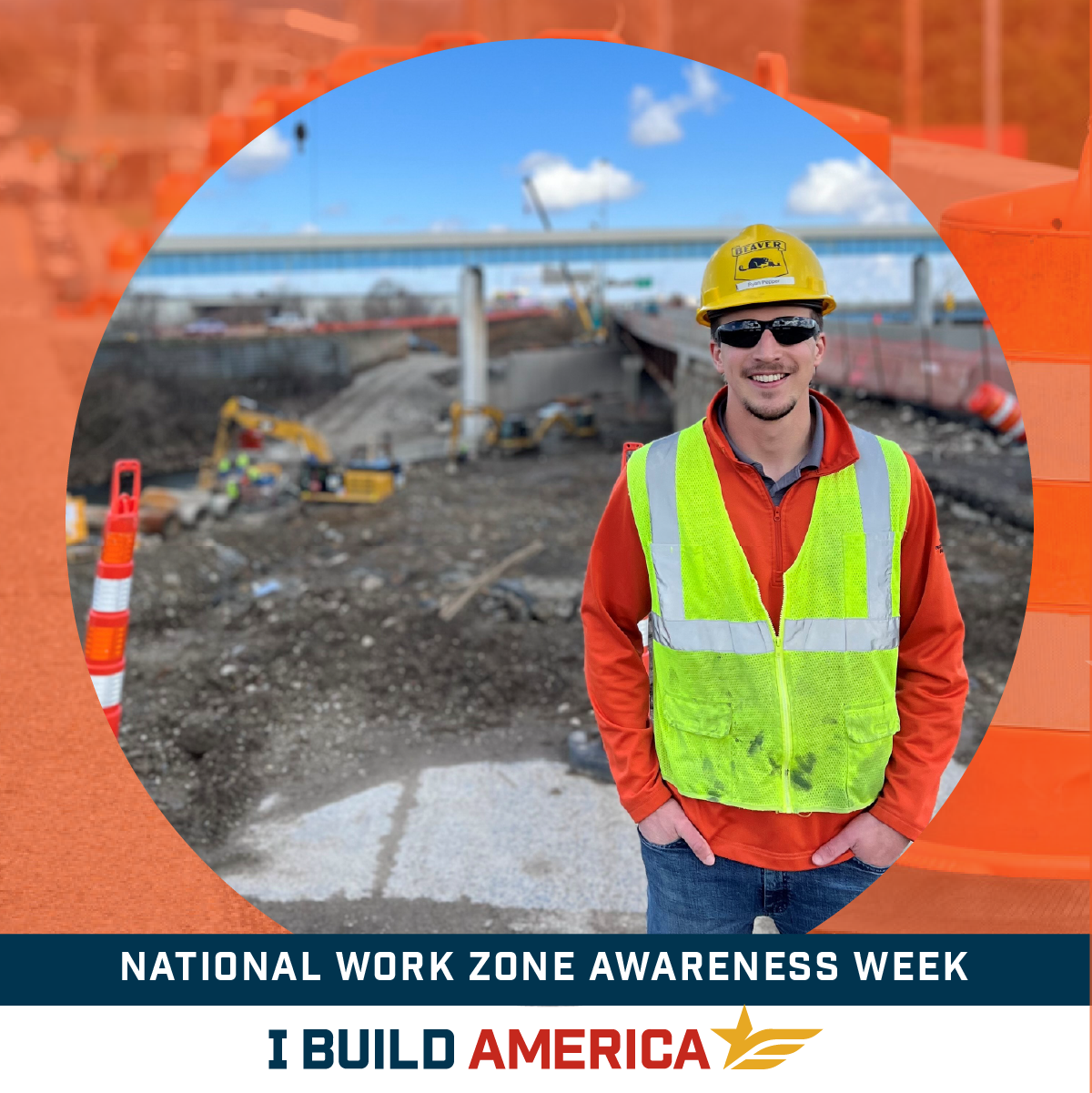
National Work Zone Awareness Week (NWZAW) is an annual spring campaign held at the start of construction season to encourage safe driving through highway work zones. The key message is for drivers to use extra caution in work zones. I Build America – Ohio is celebrating the people in construction who work hard to make these work zones as safe as possible. Read more about them below!
Name: Ryan Pepper
Company: Beaver Excavating
Title/Position: Lead Project Engineer
How do you contribute to the overarching safety of your company’s workforce? One of my main safety responsibilities is to ensure work plans, specifically engineered plans, are executed according to the plan. As a field engineer, we work through the development of these plans and is our responsibility to explain the plans to the crews, ensuring our crews follow the plan. When an engineered plan is developed, there is typically some safety risk involved in the activity, especially if not executed properly. In addition to this, I serve as Beaver’s Workzone Traffic Supervisor on our current highway project. The primary task in this role is ensuring work zones are set to plan and installed in a way that is safe to both crew members and traveling public. Overall, my role in safety is focused on crew oversight to ensure the work is being performed safely.
What does your company do to ensure safety on the job? One of Beaver’s biggest goals of their safety program is communication to all employees. Every work shift begins with a Job Safety Analysis (JSA) meeting to discuss the day’s work activities, associated safety concerns, and how to prevent incidents. Weekly “safety talks” are communicated to all employees, detailing specific safety topics company-wide in an effort to spread awareness of different safety concerns. Behind the scenes, Beaver employs many safety supervisors whose primary responsibility is ensuring work is performed safely. These safety supervisors ensure all projects are equipped with proper safety items, while also recording data on safety incidents, near misses, etc. This data is then used to correlate specific work activities with incidents or near-misses that occur, with the intent to prevent future repeat occurrences. When it comes to safety, Beaver does not shy away from spending money for a return of better employee safety.
For example, related to National Work Zone Awareness Week, Beaver ensures that all of our highway workers are properly equipped with adequate equipment including attenuator trucks, maintenance of traffic devices, and well-lit flashing work trucks. Beaver prioritizes employee safety above everything,including cost, and is why Safety is the number one core value of Beaver.
How can the public help keep construction workers and work zones safe? I’ve been working on a highway project at a major intersection in Canton, OH for nearly 3 years now. While I am newer to the industry, it has become very apparent that working on a highway is one of, if not the most dangerous work in the construction industry. Vehicle traffic is one of the few variables we deal with in construction that is somewhat out of our control. Between supervision and project management, all project activities are planned for safety to control any risk of harm to crew members. Working on a highway, there are many times our crew members are working a few feet from active traffic. One little pothole or small distraction can cause vehicles to lose control into the work zone, potentially into our work areas. Please keep this in mind as you traverse through our work zones.
Work zones can be difficult to navigate, but they are designed to allow the road work to be performed safely to both the traveling public and crews. There are typically many additional signs in work zones for the sole purpose of giving drivers advanced notice of work, notice of lane restrictions, and posting revised detours or paths to get where you need to be. Speed limit reductions are in place to slow down vehicles to not only keep our workers safe, but to allow drivers to adequately read these signs and evaluate the path you need to take. Working on a highway daily, it is visible that there are many drivers that do not care to abide by the speed limit and disregard signage. Please keep the above in mind when driving through work zones, as you are partly responsible for the workers’ lives in that zone when driving your vehicles.
Slow down, keep distance between you and other vehicles, and pay attention to work zone signage to keep you and our workers safe.